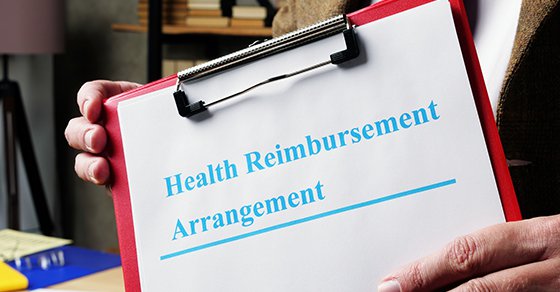Using HRAs as Investment and Savings Vehicles
- Learn how HRAs can function as investment or savings vehicles.
- Find out how you can earn interest on HRA balances under an unfunded plan.
- Learn how to establish a trust for your HRA.
Many employers have established Health Reimbursement Arrangements (HRAs) as a tax-advantaged way to allow employees to receive reimbursements for out-of-pocket medical expenses. What’s often overlooked is that, under certain circumstances, HRAs can function as an investment and savings vehicle.
Let’s say an employer establishes an HRA for employees who elect the high-deductible health coverage option under its medical plan. The HRA is considered unfunded, and each participant receives a credit of $1,000 per year — with unrestricted carryovers.
Over time, some employees amass sizable HRA account balances and pose a simple question to the employer: Can we earn interest on these balances? Below, Fiducial offers an answer and more information about HRAs.
HRAs and bookkeeping entries
The short answer is yes, but not by making actual investments — unless a trust is established to fund the HRA. (We’ll address this further below.) When maintaining an HRA on an unfunded basis, credits under the HRA represent bookkeeping entries rather than actual, separate assets. Reimbursements come out of the employer’s general assets.
Because this involves no separate assets, HRA balances under an unfunded plan won’t earn interest in the way that, for example, a savings account earns interest. If the employer wishes, however, it can periodically credit additional amounts to participants’ bookkeeping accounts in an amount equivalent to the interest that they’d have earned if their HRA balances had been held in an interest-bearing investment.
Like other amounts credited under an HRA, these “notional” credits would be nontaxable. They could be used only to reimburse qualifying medical expenses. They’d also be subject to the Internal Revenue Code’s rules prohibiting discrimination in favor of highly compensated individuals.

Establishing a trust for your HRA
As HRAs mature, long-term participants may accumulate substantial HRA balances if there’s a carryover feature. This can lead some employers to decide to fund their HRAs through a trust — for example, by using a Voluntary Employees’ Beneficiary Association plan. Such funding might be particularly attractive if the HRA carryovers represent a substantial liability on the employer’s balance sheet.
If an HRA were funded, the employer could deposit funds equal to the HRA credits into the trust to be held in an interest-bearing account, with interest allocated to participants’ HRA accounts based on their HRA balances. Note that funded HRAs are subject to additional requirements, including:
- Trust assets need to be invested prudently under ERISA’s fiduciary standards,
- Earnings that aren’t credited to participants’ accounts could be used only to defray plan administration expenses or to provide benefits to participants,
- Forfeitures attributable to terminated employees would have to remain in the trust, and
- Additional reporting requirements would apply.
Employers should carefully consider the right strategy for communicating this benefit to participants — including the ability to amend or discontinue interest-crediting in the future.
Further info on HRAs
First and foremost, HRAs can serve as a valued health care benefit for employees. However, as an intriguing “secondary benefit,” the investment and savings component may pique the interest of many participants. Want further information on this concept? Call Fiducial at 1-866-FIDUCIAL or make an appointment at one of our office locations to discuss your situation.
Ready to book an appointment now? Click here. Know someone who might need our services? We love referrals!
For more small business COVID-19 resources, visit Fiducial’s Coronavirus Update Center to find information on SBA loans, tax updates, the Paycheck Protection Program, paid sick and family leave, and more.









